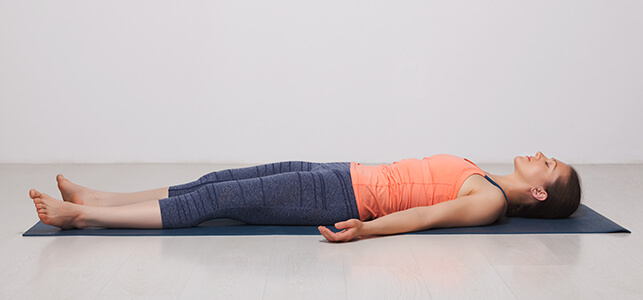Savasana may be the most important pose of the yoga practice. It is a time to allow the body to rest and restore after moving and stretching through a series of poses. Taking the time to rest in savasana gives the body a chance to return to its baseline. The breathing slows and the heart rate returns to normal, even the brain has a chance to relax.
Benefits of Savasana
By taking to rest in savasana, it is a signal to the body to begin the process of letting go. The breath and heart rate return to their natural rhythms and the muscles of the body have a chance to relax completely. When the body is able to fully relax the “relaxation response” is activated, stimulating digestion and giving the immune system a boost and benefiting all the systems of the body.
In addition to the physical benefits of savasana, when the body is relaxed the mind can also relax, reducing stress and allowing the mind and body to become more connected. Resting in savasana is not a time to plan for the future or think of the past, it is a time to relax in the present. As thoughts arise (which they naturally will) it becomes possible to let them drift past without becoming attached to them. This allows the mind and body to let go and when coming out of savasana there is a feeling of calm.
How to Practice Savasana
The classical version of savasana is lying flat on the back, legs straight along the floor and arms alongside the body, with the eyes closed. When moving into savasana, it is important to be comfortable, move any props out of the way and make sure the body is warm as it naturally cools a bit when relaxing. Allow the feet to fall apart, turn the palms to face the ceiling and let the shoulders release back.
Once comfortably lying on the floor, allow the breathing to return to a natural rhythm and soften the muscles of the body. For some, it helps to start at the toes and consciously move through the body, checking in on every muscle group to release every muscle in the body. Rest in savasana for at least five minutes, allowing time for the body and the mind to rest. To come out of savasana, start by taking a few deep breathes and move slowly to come to seated and open the eyes.
Modifications for Savasana
If the body is not comfortable when lying flat on the floor, there are many options to help the body be comfortable. For lower back discomfort, first try lifting the hips and extending the tailbone toward the heels. If that does not help, roll up a blanket and place it under the knees; softly bent knees usually helps the lower back to release.
If there is tension or discomfort in the neck or shoulders, try folding a blanket and placing it under the head. Lengthen the back of the neck so the muscles can release and let the head be heavy. An eye pillow or washcloth placed over the eyes can help the eyes and the muscles around them relax which can also help the neck release tension.
Regardless of the style of yoga practiced, it is always important to take savasana at the end of practice. Savasana is when all the benefits of the yoga can move deeper into the body, providing lasting stress release and reduced tension in the body. Taking at least five minutes in savasana to rest is an essential part of any yoga practice.
